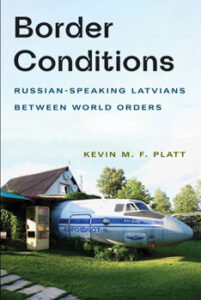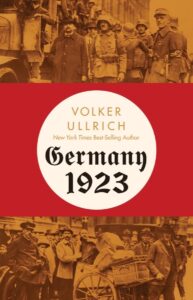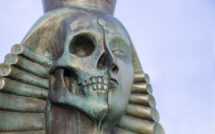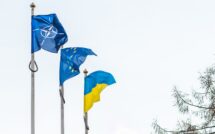

Border Conditions: Russian-Speaking Latvians Between World Orders
By Kevin M. F. Platt
Publisher: Northern Illinois University Press
Recommended by Hélène B. Ducros
In Border Conditions: Russian-Speaking Latvians Between World Orders, Kevin M. F. Platt traces the history of Soviet control on the Baltic state of Latvia by focusing on the cultural legacies of Soviet hegemony in the region, notably through poems, commemorative monuments, literature, films, and popular music. Describing how Russian-speaking Latvians in Riga approach such cultural projects—either as creators or audience—the author engages in how state socialism’s influence has remained inscribed on the urban and social landscape in Latvia. As he addresses both “high” and popular culture, Platt emphasizes the role of cultural production in facing the Soviet past by delving into various contemporary cultural undertakings and actors. He uses examples ranging from a monumental bronze sculpture to pop song festivals or TV documentaries to explain how the half a million Russophones in Latvia have shaped some of the cultural production in that country while attempting to define themselves and taking stock of their own situatedness in this border region Platt calls a “post-Soviet post-colony.” By contextualizing cultural endeavors within contested historical understandings, Platt renders tangible the pull of hegemonic pressures in contemporary Latvia. He draws on Theodor Adorno’s “negative dialectics” to study “the structure of incoherence and division, past and present” and to highlight how Russian or Russophone Latvians approach the history of their borders (and the borders of their history) by crafting their own worldviews through culture and engaging in symbolic strategies in the local. The volume will certainly resonate with scholars interested in the cultural lives of the populations of the Baltic region or the countries of the ex-Soviet bloc, but not only. It will also speak to those attentive to cultural and social imperial legacies, critical historiography, memory studies, and more generally the production of difference and conflicted meanings in post-colonial spaces. As Platt underscores issues of cultural resilience, appropriation, or rejection in European border zones, the book also provides a lens for a new reading of current geopolitical tensions between Europe and its periphery.
 Germany 1923: Hyperinflation, Hitler’s Putsch and Democracy in Crisis
Germany 1923: Hyperinflation, Hitler’s Putsch and Democracy in Crisis
By Volker Ullrich (translated by Jefferson Chase)
Publisher: Liveright
Recommended by Nicholas Ostrum
In Germany 1923: Hyperinflation, Hitler’s Putsch and Democracy in Crisis, Volker Ullrich examines the Weimar Republic in its most precarious year. At the beginning of 1923, Germany and Germans had still not recovered economically, materially, or psychologically from the First World War, and much of the population supported the government halfheartedly at best. Then, after the war, disaster struck from all directions. In retaliation for German reparation payment defaults, France and Belgium occupied the industrial Ruhr valley. The workers of the region went on strike, provoking the worst of the oft-misunderstood and misappropriated Weimar hyperinflation, to which Ullrich dedicates an entire chapter, explaining its place- and period-specific causes and its disastrous social, political, and diplomatic consequences. Most notably, this hyperinflation laid the groundwork for the Beer Hall Putsch of November 8-9, 1923, in which an unseasoned Adolf Hitler and his lackies attempted a coup from Munich’s Bürgerbräukeller. Famously, the attempt failed, but Hitler’s grandstanding in the courtroom and the lenient sentence he received were early propaganda victories for the nascent Nazi Party.
Although, the book’s basic story arc is unsurprising, Ullrich especially shines in his quick, vivid writing as well as his grasp of both the wider geopolitical picture and the oft-overlooked stories of everyday people, who struggled to adapt to their new environs through myriad ways: the black market and sex trade, artistic innovation and escapism, and political activism and radicalism. The latter resulted in a succession of anti-government and secessionist plots, which included those of Rhenish separatists, Bavarian federalists and monarchists, Moscow-aligned communists, and various movements of a far-right increasingly infatuated by the idea of a messianic dictatorship. Still, Ullrich does well to treat 1923 as the anomalous, chaotic, and indeterminate time that it was, rather than as a mere prelude to the Nazi ascent of the early 1930s. The Republic survived the year and afterward stumbled upon a four-year period of relative stability during which the Weimar democracy seemed to be taking root. Although 1923 revealed the myriad weaknesses of the Republic, it also exposed an “astonishing resilience” that even today is too often disregarded.
Published on February 15, 2024.




